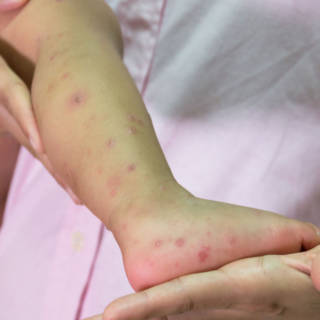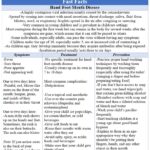What is it?
If you have young children, you probably have heard of hand-foot-mouth disease since it’s common for them to catch it. However, it can happen in adults. Just last summer, a professional baseball player contracted it. So, what is it, and what causes it? How is it treated? What can you do to prevent it?
 Definition
Definition
Hand-foot-mouth disease is a highly contagious viral infection usually caused by the coxsackievirus. It’s spread by coming into contact with nasal secretions, throat discharge, saliva, fluid from blisters, stool, or respiratory droplets distributed in the air after coughing or sneezing. This is why it’s very common in young children and is prevalent in childcare settings. It’s most contagious during the first week but can remain in the body for several weeks after the symptoms are gone, which means it can still be passed to others. Some individuals, especially adults, can pass the virus without having any symptoms. Children under the age of 10, especially those under 5, are at increased risk of contracting it. As children age, they develop immunity to it because they acquire antibodies after being exposed to it.
The incubation period usually lasts three to six days. The first sign is often a fever followed by a sore throat, poor appetite, and not appearing well. Usually, one to two days after the fever starts, you’ll notice painful, red, blister-like sores on the front of your child’s mouth (tongue, gums, and inside of their cheeks) or in their throat. One to two days after the sores appear, a non-itchy rash shows up on your child’s hands and feet. Sometimes, the rash is also on their buttocks. The rash can also blister. If you notice sores in the back of your child’s mouth and throat, they might have herpangina, a related illness. Herpangina can also cause a sudden high fever, resulting in a seizure.
Treatment
There isn’t a specific treatment for hand-foot-mouth disease. It usually clears up on its own in 7 to 10 days. The most common complication is dehydration due to the child not wanting to eat or drink because their throat is sore. To ease their discomfort, use a topical oral anesthetic and over-the-counter pain relievers, like ibuprofen and acetaminophen.
A helpful thing to try is to give your child ice pops/chips, ice cream/sherbet, or cold beverages to help soothe their throat. Also, give them soft foods and rinse their mouths with warm water after eating. Avoid salty, spicy, or acidic foods and beverages because this will irritate their throats.
Make sure your child gets plenty of rest and encourage them to take in as much fluid as possible. If your child isn’t tolerating fluids, contact their doctor or take them to the emergency room.
Prevention
The best way to prevent hand-foot-mouth disease is to practice proper handwashing techniques. So, wash them frequently and thoroughly, especially after using the toilet/changing a diaper and before preparing/eating food. If you don’t have access to soap and water, use hand wipes/gels that contain germ-killing alcohol.
Since the virus can live on objects for days, it’s vital to disinfect surfaces with soap and water and then a diluted solution of bleach and water. Also, make sure you wash your child’s pacifier frequently.
Start teaching children at a young age about good hand hygiene and explain to them in an age-appropriate way why they shouldn’t be putting their fingers, hands, and any other object in their mouth. If your child has hand-foot-mouth disease, keep them home from daycare or school until their fever is gone and their sores have healed to prevent it from spreading to other children.
Hand-foot-mouth disease isn’t something you want your child to have, but sometimes it’s unavoidable. By being prepared, you’ll be able to provide them with the care they need. If you have any questions or concerns regarding hand-foot-mouth disease, please speak with your child’s doctor. If you would like more information, please visit the American Academy of Dermatology’s hand-foot-mouth disease page at https://www.aad.org/public/diseases/contagious-skin-diseases/hand-foot-and-mouth-disease